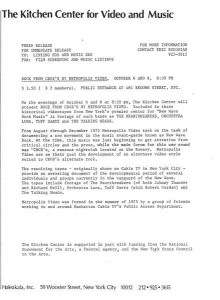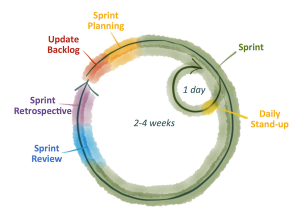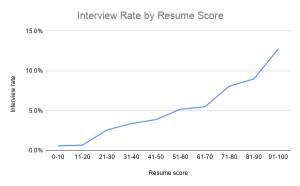Plus, big chains with localized strategies
Marketing Land’s daily brief features daily insights, news, tips, and essential bits of wisdom for today’s digital marketer. If you would like to read this before the rest of the internet does, sign up here to get it delivered to your inbox daily.
Good morning, Marketers, and who owns digital transformation?
It’s something we write about all the time, simply because it’s our reality. It’s a reality for B2B marketers especially, but for B2C marketers too, and for all of us as consumers and private individuals. If you thought you lived in a digitized world in 2019, you didn’t know what was coming.
So as business teams undergo digital transformation, and the change management that accompanies it, who’s in charge? Marketing? In many cases, I guess so. But how about (whisper the name) IT? Remember when IT controlled just about everything?
Survey results from more than 500 CIOs across the US, APAC and EMEA, released by Adobe in the run-up to Summit, showed 90% of US CIOs feeling the pressure to digitally transform their businesses (the percentage was lower in the other regions). The CIO is back in the spotlight again. But not alone. Almost all are talking about the importance of closely partnering with the CMO to improve CX (95%) and foster innovation (93%). CX is “a top focus for CIOs,” something I doubt if I would have seen in a survey two years ago.
Kim Davis
Editorial Director
A guide to visual storytelling
“Visual storytelling is a marketing strategy that leverages compelling narratives, placing the customer at the heart of the story, staged with an emotional visual media experience and effectively distributed across your buyer’s journey, in order to empower customer’s lives and drive business results.” That is how Shlomi Ron defines his specialty, which he shares by teaching university courses as well as consulting for major companies in his role as CEO of the Visual Storytelling Institute.
Over the past year, Ron has sized up how brands were handling the COVID-19 pandemic, which resulted, of course, in states and nations shutting down commerce to contain the virus. Companies could not carry on with business as usual. Brands had to find “ways to empathize with their audiences during uncertain times,” Ron noted. That means telling “meaningful stories that translate into acts, versus just sympathetic words,” he said.
“A great example is what Panera Bread did with their ‘From One Neighbor To Another’ campaign,” Ron said. “They asked their delivery drivers to shoot short authentic stories about their day using their smartphones. It’s authentic, it’s real, not salesy, and it’s a great way to diversify storytellers.” (Watch examples here.)
Adobe Experience Manager to more rapidly deliver brand experiences
Ahead of Adobe Summit, which will run Tuesday and Wednesday this week and encompasses some 400 virtual sessions, labs and workshops, Adobe announced new capabilities in its Experience Manager platform. The main aim of the enhancements is to speed the creation of assets targeted at defined personas.
Creative Cloud-powered content automation in Adobe Experience Manager Assets supports the development of assets that can be used across a range of different channels, based on one master file. These capabilities are expected to be generally available in May, 2021.
Using Adobe Sensei AI within Experience Manager Assets, it will be possible automatically to tag product images with color labels, and automatically extract keywords from text, converting them into smart tags for faster content discovery. This will be available in the second half of 2021.
Upcoming quick site creation features will enable rapid delivery of web experiences without the need for back-end development. Customizable and reusable site templates can be used to create production-ready sites, ready to be populated with content. Finally, a new workflow allows front-end developers to edit web design in their coding program before pushing the changes back into Adobe Experience Manager.
Multi-location businesses raise the bar with localized strategies
Online searches with local intent, coupled with social platforms’ increasing influence, have yielded big results for multi-location businesses with localized strategies, according to the Localized Marketing Benchmark Report (LMBR). The report was released by localized marketing platform SOCi and Localogy, a not-for-profit trade association for tech, media services and marketing companies.
Even during the uncertainty of pandemic lockdowns in the past year, the report found that businesses with an optimized localized marketing strategy grew revenue up to three times that of their peers. Researchers established benchmarks and assigned scores for businesses on a 100-point scale, based on localized search and localized social, quantifying their digital presence and performance.
There were 276 businesses surveyed. The most over-indexed categories across all brands, were retail, home services, personal care services and restaurants. The ten brands that distinguished themselves the most above the rest of the field were:
- Arby’s
- Batteries Plus Bulbs
- Clean Juice
- IHOP
- Jason’s Deli
- Jersey Mike’s Subs
- Pet Supplies Plus
- Planet Fitness
- Sonic Drive-In
- Urban Air Adventure Park
Why we care. For big brands, local search and social remain important channels to meet customers where they are or drive traffic to physical locations, even during a pandemic. E-commerce and delivery are the no-brainer solutions when consumers are staying indoors, but hybrid buying methods like BOPIS still involve the local chain, and big companies need to leverage their brand value through localized messaging strategies.
Quote of the day
“In any market where there’s a major player, there’s always room for a ‘leading alternative.’ Serve different features, a different niche, different point of view.” Steve Pratley, Growth Consultant, The Conversion Co
Marketing Land – Internet Marketing News, Strategies & Tips
(20)








